I’ve written quite a bit about Mitsubishi Delica vans. From the Star Wagon (L300) and Space Gear (L400), to the Delica D:5, I’m passionate about these JDM vehicles. Heck, I even run the MDOC: Mitsubishi Delica Owner’s Club on Facebook. Because of all this, I get a lot of the same Delica-related questions over and over, so I figured I’d do a Mitsubishi Delica FAQs right here. Hey, maybe it’ll help some Delica owners out. After all, we’re all about community at Crankshaft Culture. Here’s our Delica Deep Dive FAQs.
Which Do I Want: L300 Space Gear or L400 Star Wagon?
One of the most asked questions I get asked by potential buyers is whether to buy an L300 Star Wagon or an L400 Space Gear? The two couldn’t be more different. The mid-’80s Star Wagons feature that blocky sci-fi look with a cabover driving configuration. The early ’90s L400 Space Gear models have a rounded-off modern vibe with a traditional engine in front of you, an actual hood, and more overall comfort. While both Mitsubishi Delica models can be had with gas or diesel engines, the L400 is going to be more powerful, more comfortable, and more refined in every way. However, the L300’s boxier shape may have the edge when it comes to versatility. It’s a no-brainer when it comes to safety, as the L400 has a more crash-worthy traditional configuration. In an L300 Star Wagon, you’re the crumple zone. Neither could be had with any airbags until 1996, when the Space Gear got a driver’s-side airbag.
There’s lots of debate about which is better off road. I’ve had both, and neither is going to conquer the Rubicon Trail. However, with their low-range transfer cases and ability to run 30″-31″ tires without a lift, they’re more capable than you’d think.
If you’re very concerned about safety, however, neither of these vehicles is probably going to impress.
Gas vs Diesel Delica?

No matter which Mitsubishi Delica model you’re after, you can get a gasoline or diesel variant. But which one do you choose? That is a decision that’s entirely up to you.
Mitsubishi extensively used the 2.4-liter 4G64 engine. It powered everything from the Mighty Max pickup and Galant sedan, to the Expo wagon, and some Chrylser cars. It made about 107 horsepower and 132 lb-ft of torque. The 2.5-liter 4D56 turbo-diesel is a non-intercooled affair and makes all kinds of diesely noises and churns out about 86 horsepower and 148 lb-ft of torque. It’s also got usable power down low when off-roading. The gasoline engine is a better highway cruiser. The 4D56 is pokey at best and is typically happiest at 65 MPH and under. Those who opt for the diesel will get better fuel economy but expect to live life in the slow lane, especially on hills. Even on highways, 4D56-powered Delicas will face big slowdowns on inclines, and often will find themselves in the semi-truck lane going 35 with the flashers on. Hey, it’s part of the charm.
L400 Space Gears imported into North America usually have the 3.0-liter 6G72 V-6 (same as the Mitsubishi Montero), or 2.8-liter 4M40 turbo-diesel. The gasoline V-6 makes 185 horsepower and 195 lb-ft of torque. The 4M40 has a top-mounted intercooler and makes 140 horsepower and 232 lb-ft of torque; a lot more power than the old 2.5-liter 4D56, which is basically a tractor engine. Both engines are happy at 70+ MPH on the highway and are far more civilized than the L300 mills.
The V-6 came with a four-speed automatic only. The diesel came with the four-speed auto or a five-speed manual. (The V5M31 manual is the same transmission as 4M40-powered Pajeros.)
What Kind of Suspension Does a Delica Have?
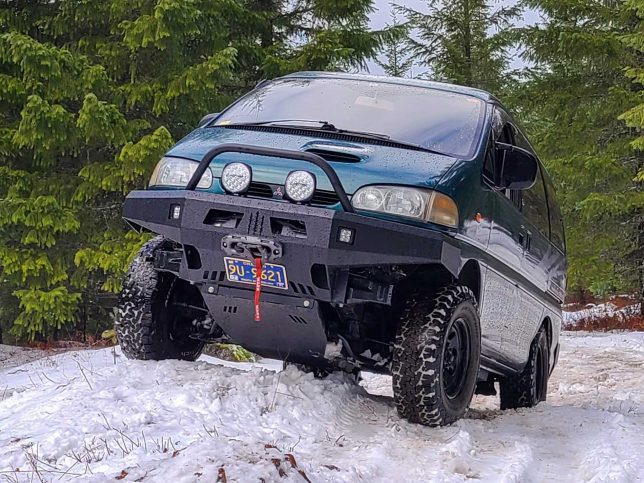
The L300 Star Wagon and L400 Space Gear have an independent front suspension using torsion bars (vs. coil springs), and an solid rear axle with coil springs. The later D:5 Delicas (2007+) have a fully independent coil-spring suspension system.
If you’ve never had a vehicle with torsion bars, they provide a good ride, but those looking to lift their Mitsubishi Delica will generally have to settle for nothing more than about 1.5″-2″ of lift as you can’t simply throw on taller springs. Torsion bar suspension setups also don’t provide much flex off-road.
There are aftermarket suspension setups available from a variety of companies, including Ironman 4×4, Dobinsons, and others.
Are All Delicas 4WD?
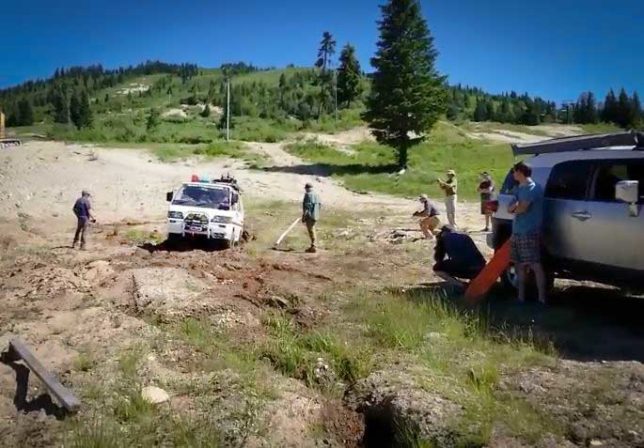
Most Delicas imported into North America are 4WD. It’s a true 4WD system using a low-range transfer case. The Delica L300 Star Wagon got a traditional system with 2WD, 4WD high, and 4WD low. The 1994+ Space Gear models had the Super Select transfer case. This included a vicious coupler allowing for an additional 4WD high but with an open center differential, which acts more like AWD.
Many vans had automatic locking front hubs, although some L300s had a manual option. And while a locking rear differential was not an option from the factory, a limited-slip rear differential was available.
But no, not all Delica vans were 4WD. Mitsubishi did sell them as 2WD vans, which were rear-wheel drive.
How Does The Mitsubishi Delica Drive?
There’s a big difference between how the L300 Star Wagon and L400 Space Gear drive. The L300, with its cabover configuration, feels much different than the traditional engine layout on an L400. If you’ve never driven a forward-control vehicle, it’s a bit weird at first.
Much of their driving characteristics depend on which engine you get. But let’s just say this: none are fast. In fact, most are quite slow, especially in diesel guise. Don’t expect to go anywhere terribly fast.
In terms of handling, they corner like they look. They’re rather top-heavy, and when paired with a short wheel base, they’re not great in the corners. Care must be taken when executing emergency maneuvers, much like a VW bus or Vanagon. Get used to life in the slow lane. But that’s not a bad thing. In fact, it’s kind of nice once you accept you’re going to go 65 MPH most places. Around town and off-road, however, Delicas are surprisingly nimble and sure-footed for this kind of vehicle.
Are Parts Hard To Get?
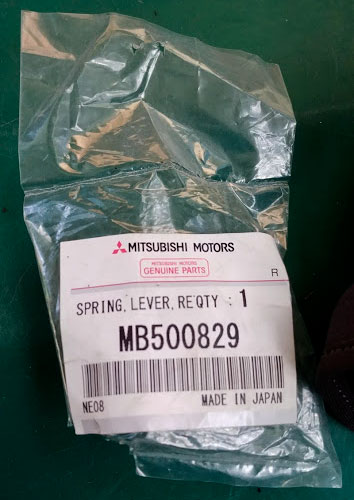
I’ve written an entire article about this. But let me just say this: Some parts you can get at your local parts store. Other parts have to come from other countries. But that often includes Canada, and shipping and prices aren’t as bad as you might think. Brake parts, oil and fuel filters, and some driveline components can be sourced in North America. The Mitsubishi Montero shares some parts, too. However, it’s not like Montero parts are exactly lining the shelves at your local NAPA. I cannot emphasize this idea enough, however: You’ll need to get good at cross-referencing parts. Yes, it takes time, but it’s part of owning a vehicle like this. But the unique capability, versatility, and 4WD performance these vans offer negate the difficulty in finding parts, at least for me.
Note: From 1987 to 1990, Mitsubishi Motors in the US sold the “Mitsubishi Van.” It was for all intents and purposes a Delia. It was a two-wheel-drive van with the 2.4-liter gasoline engine and an automatic transmission. However, many parts will fit the L300, including the front and rear windshields.
Are There a Lot of Options?
The L300 and L400 were made at a time when you could pretty much get these vans any way you wanted. Therefore, they are available in a dizzyingly array of variants with countless options. From electric coolers and curtains to swiveling seats and a factory-optional karaoke machine, it can seem like no two Delicas are alike, no matter the trim.
L300 and L400 models were available with a low or high roof configuration. Additionally, high-roof models had available Crystal Lite glass roof panels. L400 models could also be had in long-wheelbase models. There were also a host of trim packages. GLX, Exceed, Royal Exceed, Chamonix, Jasper, and the list goes on. But just because your 1989 Delica GLX has a certain feature, doesn’t mean they all did. Again, you could get these made exactly to your liking.
Will My Mechanic Work On a Delica?

Probably not. Unlike a Toyota Tacoma, a VW Vanagon, or a Mercedes-Benz Sprinter, there aren’t a whole lot of shops in North America that specialize in JDM vans. Many general repair shops won’t want to work on these vehicles because they won’t have the shop manual, have to spend time finding parts, or have simply never worked on one. Find a shop that’ll wrench on these vans before you buy. Shop manuals can be found online. Pass them along to the mechanic you find. But really, these are pretty simple vehicles overall.
Do I Need To Work On The Van Myself?
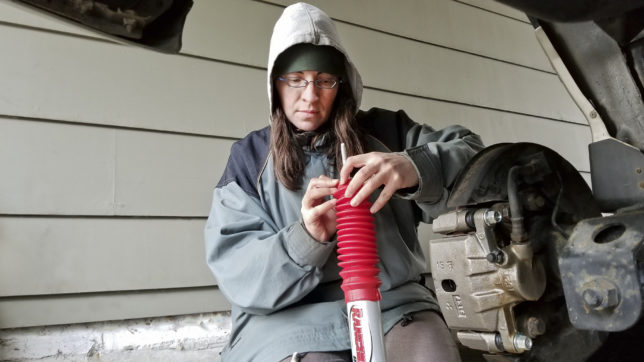
I always tell prospective JDM vehicle buyers that if you’re planning to buy a 25+ year-old Delica, if you don’t already know how to work on cars, you’d better be willing to learn. No, you don’t need to know how to rebuild your engine in the driveway. However, little things like tightening up belts, changing bulbs, replacing filters, and so on are skills you may want to develop. This way, if something does go wrong, you’re not having to always take it to a mechanic. Remember: Many of these vehicles are at least a quarter-century old. You simply cannot expect for these to be like a brand-new van, car, or truck. Since these are fairly simple vehicles, they’re good platforms to learn how to wrench on a vehicle.
Where Do I Get Insurance?
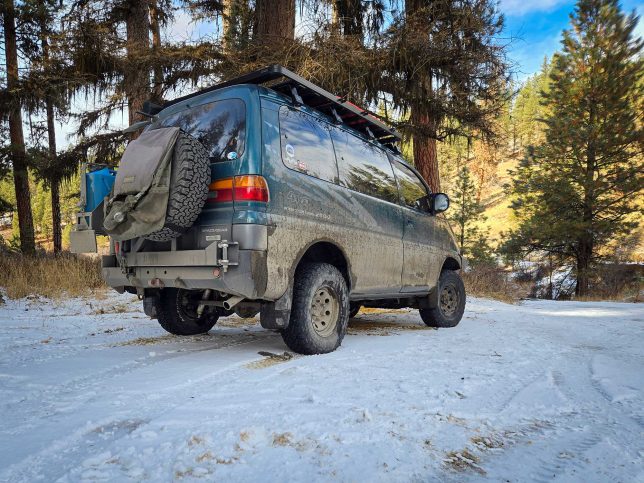
Another topic that regularly rears its head in the Facebook groups arises from insurance and where to get it. We insure our daily drivers with State Farm, but they wouldn’t insure our 1989 Delica Starwagon. Since it wasn’t a daily driver, we opted to go with Hagerty, which is specialty car insurance. They offer agreed-upon value. This means you tell them what the vehicle’s worth and they insure it for that much. You don’t need an appraisal or inspection. I’ve heard rumors of Geico, USAA, and Progressive insuring Delicas, but not at agreed-upon value. If you don’t have an agreed-upon value, getting an accurate payout if the van is totaled could be difficult. Let’s say you buy a van for $15,000. Let say it gets totaled. You might only get $3,000 because it’s an “old Mitsubishi van.” The caveat with specialty insurance is there are often mileage restrictions, and if it’s your daily driver, you’re out of luck.
Interestingly, we were able to get State Farm to eventually cover our 1994 Delica Space Gear with an agreed-upon value. It wasn’t easy to negotiate, but they did it. Also of note, if you go the Hagerty route, you may encounter mileage restrictions, and you must have a daily driver aside from your van. For every car they insure, they require you have one that is a daily. Costs will vary depending on the vehicle, but get a quote before buying if possible.
Is Driving a Right-Hand-Drive Delica Hard?
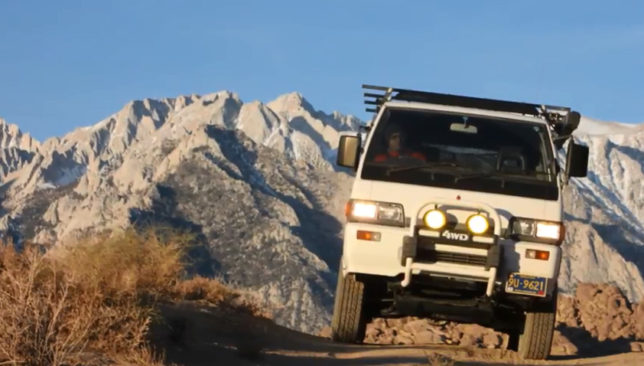
Right-hand-drive vehicles have a learning curve. They take some getting used to, but, it’s not as bad as you think. With ample seat time, you won’t even think about this. Honestly, the biggest difficulty is getting into the wrong side of the car after a while. Things to avoid in right-hand-drive Delicas? Drive-thrus.
Can I Get a Left-Hand-Drive Delica?
Technically yes. However, there are way more right-hand-drive Delicas than left-hand-drive. It’s not wholly impossible to get a hold of a left-drive model from Europe or Taiwan, but it’s far rarer.
Delicas are just Mitsubishi Pajeros (Monteros) With A Van Body, Right?
This is one of the most common misconceptions out there in the Mitsubishi Delica world. The Mitsubishi Pajero and Montero had body-on-frame construction until 2001. Delica vans (post-1986) have unibody construction without a separate frame. The two actually share fewer parts than most people think. Yes, some of the brake and suspension parts are the same, but again, it’s not really all that many! So when your brake shoe adjuster needs replacing on your 1989 Delica Star Wagon and the Internet says, “It’s the same part as a 1989 Dodge Raider,” you stop and tell them—nuh uh! (Ask me how I know.) The point is this: these aren’t just Pajeros/Monteros with van bodies.
Can You Register a Delica in all 50 States?
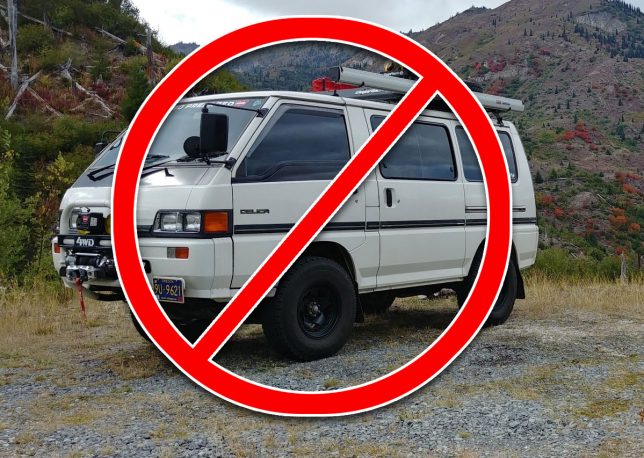
If you’ve done much research into Delica vans, most states will allow them to be registered. In fact, 49 of 50 at the time of this writing. It’s only the state of Maine that still doesn’t seem to think a Delica, a van the size of a Chrysler Pacifica, is worthy of on-road use. These are not kei vehicles, which cannot be registered in a handful of states. You can still, however, run into DMVs that don’t know how to register a foreign-market vehicle, and you must have the appropriate paperwork from the importer if it’s never been registered. And just because it was legal to import into the U.S. doesn’t always guarantee its ability to be registered, as that’s a state thing, not a federal imporation issue.
Fun and Funky Vans, But Know What You’re Getting Into
I’ve said it once, and I’ll say it again: Owning a JDM vehicle is not for everyone. However, they’re unique head-turners that offer up super versatility, off-road capability, and surprising camping comfort. Just do your research, go in with your eyes wide open, and a Mitsubishi Delica can be a totally satisfying vehicle to own.


Andy Lilienthal is an award-winning writer and has written professionally since 1999. He has over 13 years in the automotive aftermarket working at companies including Warn Industries, Bushwacker, and Lund International. Editorial works include writing and photography for off-road print magazines, to new-car reviews online. He’s a photographer with images in multiple magazines, blog sites, and The New York Times.


Leave a Reply